King of Kings (1961 film)
7.8 /10 1 Votes
86% Rotten Tomatoes Genre Biography, Drama, History Initial DVD release February 25, 2003 Language English | 7.1/10 IMDb Music director Miklos Rozsa Duration Country United States | |||||||||||||||||||||||||||||||||
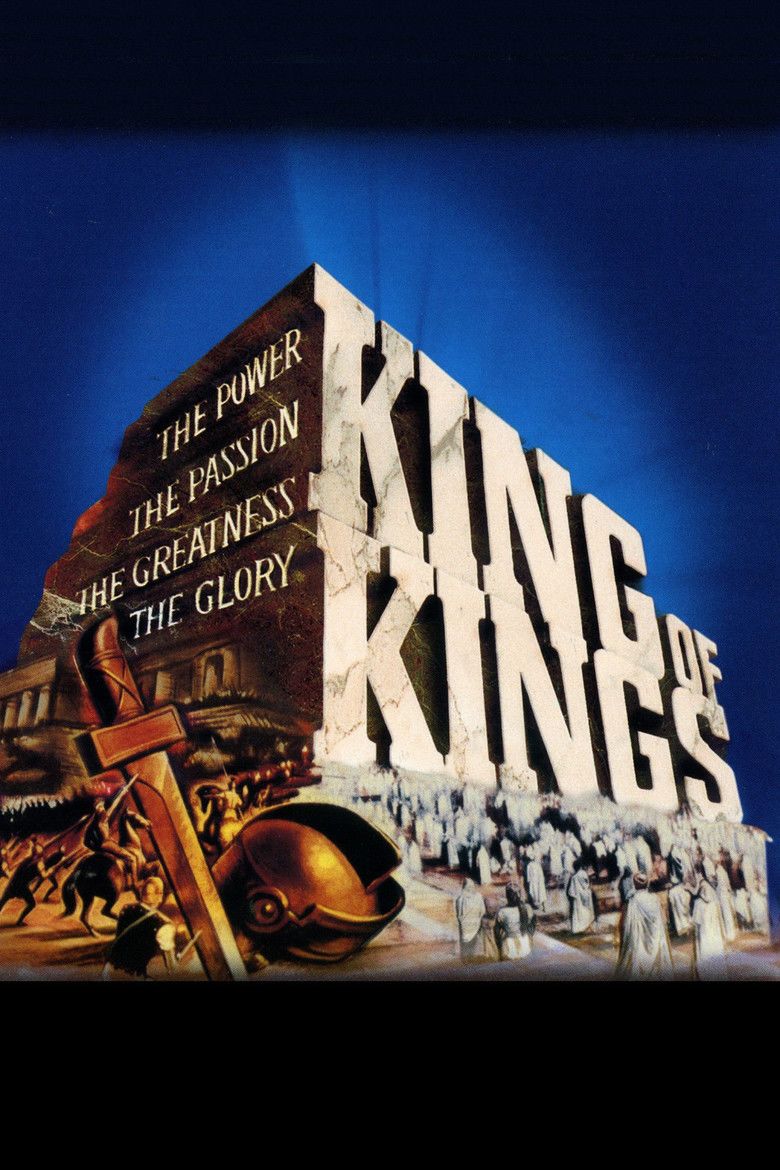 | ||||||||||||||||||||||||||||||||||
Release date October 11, 1961 Cast Similar movies The Hood Samaritan , Leopard Vision Vol.1 , Marching to Zion , Revelation - The Bride, The Beast & Babylon , The Wolf of Wall Street , Exodus: Gods and Kings Tagline Of good and evil, of love and hate, of peace and war. | ||||||||||||||||||||||||||||||||||
King of kings official trailer 1 viveca lindfors movie 1961 hd
King of Kings is a 1961 American Biblical epic film made by Samuel Bronston Productions and distributed by Metro-Goldwyn-Mayer. Directed by Nicholas Ray, the film is a dramatization of the story of Jesus Christ from his birth and ministry to his crucifixion and resurrection, with much dramatic license.
Contents
- King of kings official trailer 1 viveca lindfors movie 1961 hd
- King of kings 1961 jail scene lucius jesus john
- Plot
- Primary cast
- Production details
- Reception
- Box office
- Legacy
- DVD
- References
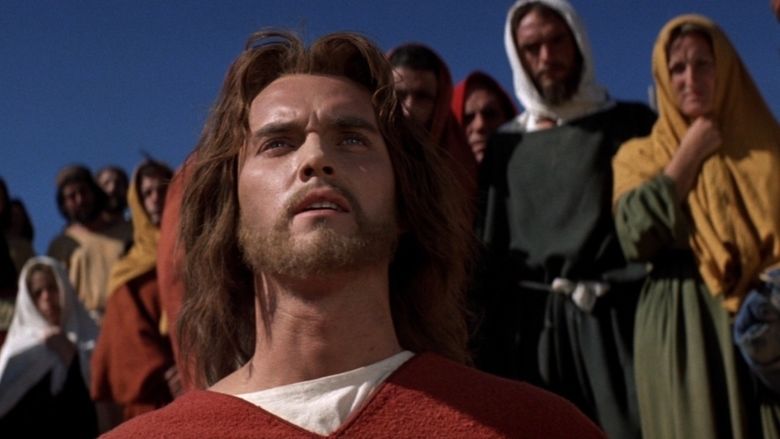
King of kings 1961 jail scene lucius jesus john
Plot
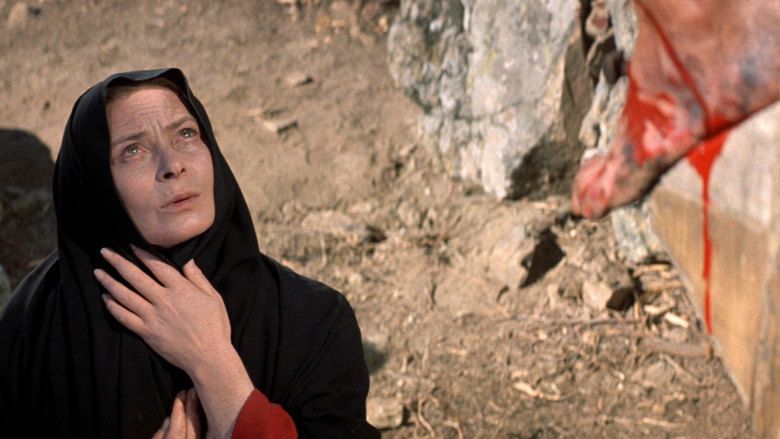
In 63 BC, Pompey conquers Jerusalem and the city is sacked. He enters the Temple to seize the treasure of Solomon and massacres the priests there. He discovers that the treasure is only a collection of scrolls of the Torah. These Pompey holds over a fire until an old priest reaches for them imploringly. Pompey relents and hands them to the old man and leaves to carry out massacres of enemy villages and towns
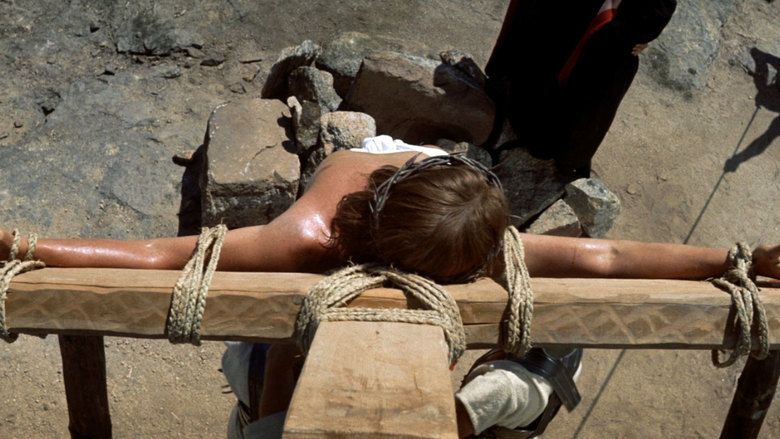
Many years later, a series of rebellions break out against the authority of Rome, so the Romans crucify many of the leaders and place Herod the Great on Judea's throne.
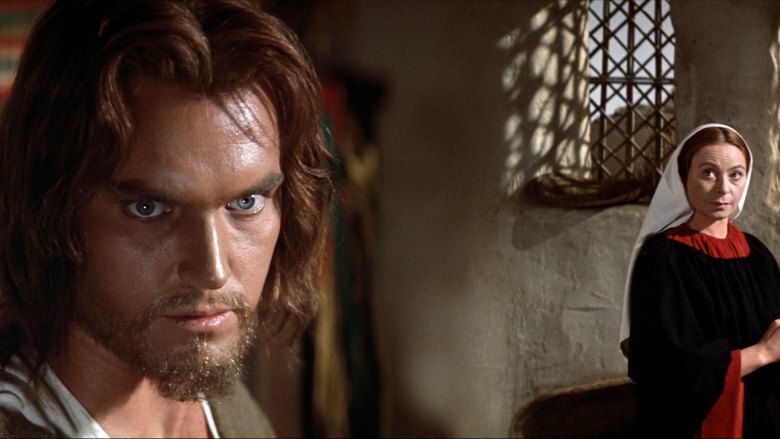
A carpenter named Joseph and his wife Mary, who is about to give birth, arrive in Bethlehem for the census. Not having found accommodation for the night, they take refuge in a stable, where the child, Jesus, is born. The shepherds, who have followed the Magi from the East, gather to worship him. However, Herod, informed of the birth of a child-king, orders the centurion Lucius to take his men to Bethlehem and kill all the newborn male children.

Mary and Joseph flee to Egypt with the child. The Massacre of the Innocents occurs, Herod dies, killed in his death throes by his son Herod Antipas, who then takes power. In Nazareth, Jesus, who is now twelve years old, is working with Joseph when soldiers arrive under the command of Lucius, who realizes that Jesus escaped the massacre of the infants. But Lucius does nothing and only asks that Mary and Joseph register their son's birth before the year's end.
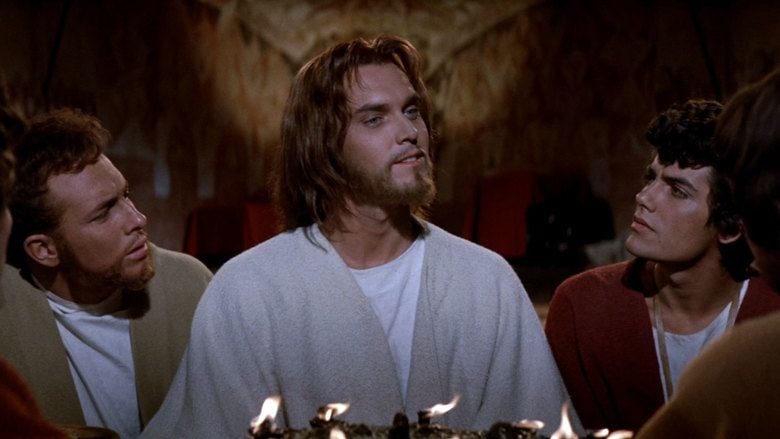
Years pass and Jewish rebels led by Barabbas and Judas Iscariot prepare to attack a caravan carrying the next governor of Judea, Pontius Pilate and his wife Claudia. The ambush fails, partly due to the diligence of Lucius, and Barabbas and Judas flee for their lives.
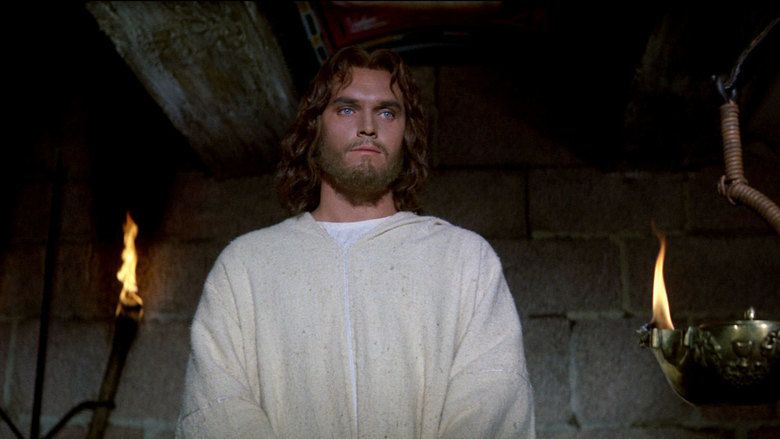
Pilate and Herod Antipas meet on the banks of the River Jordan, where John the Baptist preaches to the crowds. Jesus arrives here, now 30 years of age. He is baptized by John, who recognizes that he is the Messiah. Jesus goes into the desert, where he is tempted by Satan. After forty days, Jesus travels to Galilee, where he recruits his Apostles.
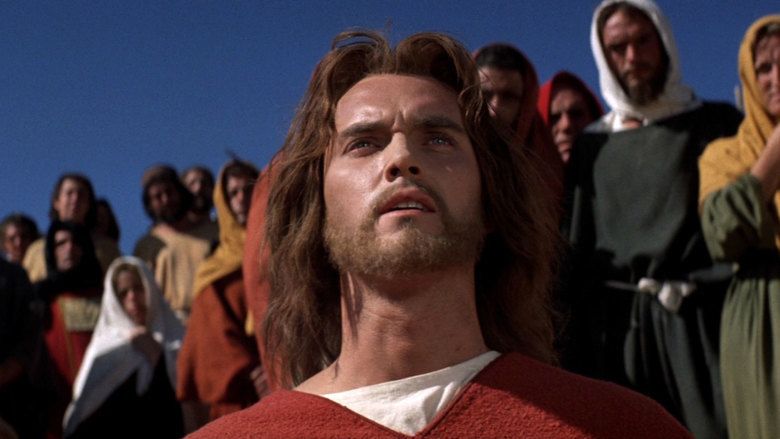
In Jerusalem, Herod Antipas arrests John the Baptist, who is visited by Jesus in prison. Judas leaves the rebel Barabbas and joins the Apostles. Jesus begins to preach and gather crowds, among which are Claudia, Pilate's wife, and Lucius. Herod reluctantly beheads John on a whim of his stepdaughter, Salome, who despises him.
Herod, Pilate and the High Priest Caiaphas are terrorized by the works and miracles of Jesus. Barabbas plots a revolt in Jerusalem during Passover, during which time Jesus enters the holy city in triumph and goes to the Temple to preach. The rebels storm the Antonia Fortress, but the legions of Pilate, having learned of the plot, ambush and crush the revolt, massacring the rebels. Barabbas ends up arrested.
Jesus meets the disciples on the evening of Thursday, having supper one last time with them and afterwards goes to pray at Gethsemane. In the meantime, Judas wants Jesus to free Judea from the Romans, and, to force his hand, Judas delivers him to the Jewish authorities. Jesus is brought before Caiaphas and then brought before Pilate. Pilate starts the trial, but sensing that the issue is one of Jewish sensibilities, sends him to Herod Antipas, who, in turn, sends him back.
Pilate is infuriated by Antipas' returning of Jesus and commands his soldiers to scourge Jesus. The people demand the release of Barabbas, and Pilate bows to their pressure and sentences Jesus to be crucified. Jesus, wearing a crown of thorns on his head, carries his cross to Golgotha where he is crucified with two thieves, one of them being the penitent thief Dismas.
Desperate because he has betrayed Jesus to his death, Judas hangs himself and his body is found by Barabbas. Jesus dies in front of his mother, the apostle John, a few soldiers, Claudia (Pilate's wife), and Lucius (who utters the fateful words: "He is truly the Christ"). His body is taken down from the cross and is carried to a rock tomb. Two days later, Mary Magdalene finds the tomb empty, and encounters the Risen Jesus.
The film ends on the shores of Lake Tiberias when Jesus appears to the Apostles for "a final time" according to the narration, and tells them to bring his message to the ends of the world. Only his shadow is visible, forming the shape of a cross where it falls on the stretched-out fishing nets. The apostles then leave, and, as the shadow of Jesus falls across the screen, it could be assumed that he is ascending to Heaven.
Primary cast
Rip Torn and Carmen Sevilla are the last surviving primary cast members.
Production details
An earlier silent film about Jesus Christ entitled The King of Kings directed by Cecil B. DeMille and starring H.B. Warner as Jesus was released in 1927. That film, however, begins when Christ is already an adult. Director Nicholas Ray's 1961 version tells the story from the beginning and places Jesus' life in the political context of Roman conquest. As Jesus becomes an active preacher and healer, his activities are contrasted with the political stance of Barabbas and his insurgents who battle against the Roman occupiers.
In contrast to other film versions of the life of Christ, which show Barabbas only as the murderer whose freedom is offered in exchange for Jesus' life, in King of Kings Barabbas plays a major role, being depicted as an incendiary figure fighting Roman domination and as a good friend of Judas Iscariot. Judas believes that he can persuade Barabbas to embrace Christ as a liberator and that he can influence Christ to take up arms against Rome, but Barabbas becomes disillusioned after listening to the Sermon on the Mount. It is then that Judas decides to betray Christ to the Romans. When Lucius frees Barabbas, Lucius pointedly commands Barabbas to go look at Christ as he carries his cross.
The film features scenes of Jesus' miracles and his Sermon on the Mount (shot with many thousands of extras), as well as a scene where Jesus visits John the Baptist in his dungeon during his imprisonment by Herod Antipas. Ray staged the scene in such a way that John the Baptist must crawl up an incline inside the dungeon, holding out his hand to reach for Jesus' hand, a vivid example of Ray's architectural sense of composition and visual drama: Ray had been the Theatre Apprentice in the original Taliesin Fellowship set up in Wisconsin by the architect Frank Lloyd Wright (1970: conversation with James Leahy; see also article and interview in Movie No. 9, May 1963.).
Nicholas Ray's direction balances majestic spectacle with more mundane and small-scale drama, such as Jesus' relationships with his mother and the apostles. The Sermon on the Mount sequence is nearly at the exact center of the film, conveying the core moral and spiritual message of Jesus, which plays a pivotal role in the subplot of Barabbas' mixed attitude towards Jesus.
The production was photographed in Technirama by Manuel Berenguer, Milton R. Krasner and Franz Planer, and was presented in 70mm Super Technirama at selected first-run engagements. It was the first film of the life of Christ to be presented in 70mm, which was not in use when previous films on the same subject had been made. The previous film version of Christ's life, a church-sponsored film called Day of Triumph, had been filmed in standard "spherical" widescreen in 1954 by much the same people who filmed television's The Living Christ Series.
Not credited at the time, Orson Welles did the voice-over of the narration, written by Ray Bradbury. Welles insisted on pronouncing the word 'apostles' with the normally silent 't'.
Reception
At the time of its release, the film received negative reviews from major publications such as Time magazine and New York Times's Bosley Crowther. The latter felt that the movie had "the nature of an illustrated lecture" and was a "peculiarly impersonal film that constructs a great deal of random action around Jesus and does very little to construct a living personality for Him."
However, its reputation has since improved, with such critics as Leonard Maltin giving the film three-and-a-half stars out of four. Musicians such as Grammy Award-winning Art Greenhaw have cited the movie as being an influence in their work and even their favorite film of all time. The film holds a "fresh" 86% on Rotten Tomatoes.
King of Kings is also memorable for the music score by composer Miklós Rózsa, which was nominated for a Golden Globe Award. Rózsa's most recent work at the time was the score for MGM's hugely successful religious epic Ben-Hur (1959), for which he won his third Oscar. Rózsa composed the scores for many of MGM's epic films, including Quo Vadis (1951).
Box office
According to MGM records, the film earned $8 million in North America and $5.4 million overseas, earning a profit of $1,621,000. According to the Internet Movie Database, the film had a budget of $6,000,000, and made $25,000,000 worldwide as of 1989, based on total worldwide cinema showings, video rentals, and video sales.
Legacy
Most films at the time, except for the 1935 French film Golgotha, did not show Jesus' face, preferring to do shots of his hands (as in Ben-Hur) or over-the-shoulder views. King of Kings was the first large-budget, major-studio sound film in English to actually show Christ's face. Jeffrey Hunter's youthful, matinee idol appearance (although he was 33 when cast) caused some to nickname the film "I Was a Teenage Jesus", a parodic reference to the 1957 horror film I Was a Teenage Werewolf.
The film is recognized by American Film Institute in these lists:
DVD
King of Kings was released to DVD and Blu-ray by Warner Home Video on July 28, 2009 and on March 29, 2011, respectively as a Region 1 widescreen disc.
References
King of Kings (1961 film) WikipediaKing of Kings (1961 film) IMDbKing of Kings (1961 film) Rotten TomatoesKing of Kings (1961 film) themoviedb.org
